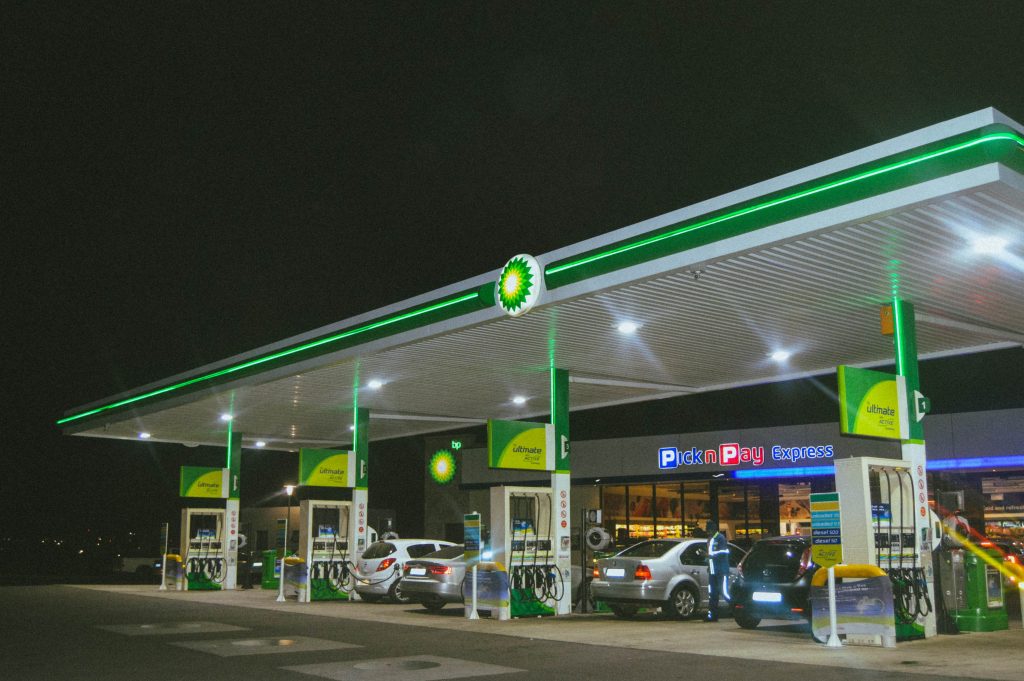Over the weekend of Goodwood Revival, I looked on with no small amount of envy as classics were all around me and and I was heading elsewhere for work commitments. A brace of vintage Bentleys barked like seals at the lights, a couple of young guys in a red E-type and an MGB GT V8 burbled past. How I longed to be alongside them on my Moto Guzzi, or in my Triumph GT6 rather than attending a PCR test so I could be declared fit to travel abroad.
Yet when I saw one of those old Bentleys limp past my house later that evening, I wondered what had caused that misfire.

Was this month’s introduction of E10 ethanol enriched petrol to blame? Did the hapless owner fill up with his usual tankful, little knowing that the distilled bio ethyl alcohol will have mounted an all-out assault on his car while he enjoyed the racing? From the copper and cork washers in his Skinners Union carburettors and the solder in his brass carb floats, let alone the other parts of the WO Bentley designed monobloc engine which this aggressive solvent could get its teeth into, could it have been the new grade of petrol causing rough running? Especially when the government’s online fuel compatibility checking tool is far from accurate.
Yet, it didn’t need to be this way. Last year the government sneaked out a White Paper on a predestined move to E10 bioethanol fuel mix signed by previous government ministers.
In theory E10 fuel should have been introduced around 2011 when the new EU standard was established, but Britain dragged its feet. By 2014 the government was talking seriously, but again a combination of push back from interested bodies and poor pump labelling put paid to the plan.
The undertaking was part of the Renewable Transport Fuel Obligation (RTFO), which required 10 per cent of road transport energy to be from renewable sources by 2020 and 12.4 per cent by 2032. Large-scale fuel providers were obligated to meet these targets and show what mix of their fuel came from renewable and sustainable sources.
Like a lot of so-called environmental legislation, the benefits weren’t clear cut. Even the government’s own Impact Assessment report said that “there are no clear consumer advantages to choosing E10 fuel” and also that its RTFO targets up to 2032 could be met without the introduction of E10.
Nevertheless, you’d have thought that adding bio ethanol to petrol at least saves the release of climate-changing carbon dioxide (CO2) greenhouse gas when fossil fuels are burned. And that’s true, though exactly how much it saves is the source of some debate. In 2019, the UK government’s own figures claimed that the 1,400 million litres of fuel equivalent saved about 82 per cent of CO2, but that figure fell to 78 per cent when indirect land use change was taken into account.
For most cars built after 2000 there’s no change, just fill up and pay; your car will run on E10. For cars built before then, however, it’s a bit of a lottery and for classic cars (and also motorcycles, garden machinery and marine applications), E10 isn’t a great idea. Ethanol is a solvent, which if not inhibited properly, can attack many parts of a fuel system including zinc, brass, copper, aluminium, seals, cork, leather, polyurethane and epoxy resins.
There’ve been issues with older cars in America and in marine and agricultural industries where fuel tanks are often lined with epoxy resins or entirely constructed of glass reinforced plastic. It also strips out deposits in fuel tanks and lines, injector pumps and carburettors, which cause blockages. And it’s massively hygroscopic, which means it attracts water and that’s a big problem for cars that are left for several months; classic cars for example. The water can cause corrosion in fuel systems and will cause paper filters to swell up. There are also issues with cold starting when ethanol is used in high concentrations.
But with a government simpering at the thought of leading world leaders into a new world order of low-carbon stewardship at COP 26 this autumn, there’s at least the environmental benefits of ethanol aren’t there?

On the face of it, burning plant-derived ethanol provides a virtuous carbon cycle; plants absorb CO2 (they release it as well) and after the bio ethanol that is processed from them is burned in engines, it releases that same CO2 back into the atmosphere.
It’s more complicated than that, however, since crops have to be grown, tended, harvested, dried, fermented, distilled and burned, which requires resources – land, energy and lots of water.
Energy balance is the figure for the energy invested against the energy harvested and studies have shown the energy balance of US corn-derived ethanol to be as little as 1.3, with Brazil’s sugar-cane-derived ethanol having an energy balance of up to eight. In 2019 in the UK, imported corn-derived, bio ethanol feedstock accounted for 31 per cent of the bio ethanol burned and 10 per cent of the total renewable fuel.
There is also evidence that while ethanol burns without significant particulate emissions, it adds to exhaust toxity which can be an issue in built-up areas. It’s also about a third less energy dense than pure petrol, which means if you burn it, according to the US Environmental Protection Agency, there’s between a three and four per cent reduction in fuel consumption compared with oil-based fuel.
Tests, however, have shown fuel consumption could increase by as much as 11 per cent, especially in small cars. When What Car? performed independent testing of the fuel consumption of family cars run on E10, they were found to guzzle more fuel, by between 9.8 per cent and 11.5 per cent. Even the government’s own research suggests that best-estimate costs to car owners using E10 could be a total of an extra £200 million in the first year alone.
There’s also the issue of biomass culture being substituted for food production and a distinctly awkward question of the morality of growing food for our cars in a world where, according to UN Food and Agriculture Organization estimates, “there are about 815 million people in the world suffering from chronic undernourishment”.
And concerns have also been expressed about inter-government high-level sharp dealing in carbon credits and import tariffs, which could have the effect of bio ethanol being tankered around the world to massage renewable fuel figures – but they wouldn’t do that would they?
In Europe E10 fuel has been available for some years now, but it is sold alongside E5 with just five per cent ethanol, which has remained available at the pump and that’s what a lot of old car owners use.
So why isn’t this the case in the UK? The answer lies in the way the white paper was sneaked out in the middle of a Covid lockdown with no publicity. The government said that the move could result in CO2 saving of up to 750,000 tonnes (though that figure was 700,000 tonnes in the first paper on this subject), or the equivalent of taking 350,000 cars off the road.

This was the result of negotiation with the seven bio-fuel retailers, one fuel retailer and 15 trade associations who replied to the original 2018 white paper along with 57 members of the public and a number of motoring organisations. Rather than offer a third grade of petrol, which was a popular idea with the public and the method used in Europe and North America, the industry put pressure for a seamless introduction (for them) so that E10 bio ethanol mix would become the new ‘standard’ premium fuel with an octane rating of 95 Ron min, with what we now know as super unleaded (octane rating 97 Ron min) as the low bio ethanol fuel choice with less than 5 per cent mix.
This is partly because in the majority of large petrol stations the industry has standardised on four tanks and four outlet pumps with standard and super unleaded petrol, standard and high-cetane, low-sulphur diesel being supplied.
In other words, it’s a fix that suits the government and the fuel retailers and no one else, particularly that poor man in his sickly Bentley now being attended to by a breakdown man and van. One recent estimate suggests that even with the lower fuel consumption penalty of E10, running a car on super unleaded could cost drivers up to 12 per cent more.
There’s nothing much wrong with trying to give E10 bio ethanol a trial, but the way it has been introduced in the UK is a sham that shows our politician as a duplicitous, manipulative lot and fuel companies as conglomerates that don’t give a stuff about the owners of older and classic cars.
Read more
Confusion over E10 fuel as government’s car compatibility checker misleads drivers
Everything you need to know about using E10 fuel with your classic car
Opinion: Don’t let emotions ruin your next car-buying adventure










My local petrol station was selling E5 at £1.55 per litre. £7.50 a gallon? Scary.
Indeed. Stopping at the M25’s Cobham services, on Sunday morning, I paid around £1.68 for Super (E5). Ouch.
Hygroscopic, not hydroscopic
The government’s sneaked white paper from March 4, 2020, is here: https://assets.publishing.service.gov.uk/government/uploads/system/uploads/attachment_data/file/876383/introducing-e10-petrol-consultation.pdf
*The reason for choosing the standard 95 octane grade is that it is used by most drivers (currently around 95% of petrol sales are for the 95 grade). As a result, this is the only grade that, with increased ethanol content, could deliver significant carbon savings.
*E10 could only deliver significant carbon savings and provide an increased market for UK bioethanol producers if it becomes the main petrol grade in the UK. Introducing E10 as an additional (rather than main) fuel on the market would not deliver these benefits, and could increase costs and complexity for fuel suppliers as well as consumers.
*At present, in relation to ethanol, the MFCC Regulations include reference to two specifications for petrol. These are for E5 petrol, with between 0 and 5% ethanol (and no more than 2.7% oxygen), and E10 petrol, with between 0 and 10% ethanol (and no more than 3.7% oxygen). The link to oxygen content is significant because ethanol is the most commonly used oxygenate in petrol blending.
*Blending ethanol is typically a cost-effective measure for suppliers to meet their obligations, and we would therefore expect blending levels to go beyond 5.5%, towards the 10% limit.
* Were we to require higher minimum levels of ethanol blending, we would limit flexibility in the fuel supply sector to meet overall renewable fuel targets. Suppliers would be dissuaded from using other bio-components in their petrol blends. Renewable fuels, such as ETBE, bio-methanol and bio-MTBE can all be blended with fossil petrol under the current petrol standards. Suppliers would also be less able to vary blending levels based on fluctuating prices and geographic differences.
* The 5.5% ethanol requirement therefore strikes the right balance between ensuring a market-wide switch to E10, removal of the E5 blendwall and a guarantee that the 95 grade would contain less fossil fuel by volume after the introduction, while still providing flexibility for suppliers to meet their overall renewable fuel obligations.
Whilst I drive a Rolls Royce Silver Shadow 1, with electronic ignition etc, I am very dubious about filling with E10 fuel. Even with upgrades to the engine, I still occasionally have the usual “pinking” issue on hills etc. I suspect with changing fuel, this will at best be the least worst effect. I am reluctant to take the risk though, so will stick to E5 fuel even though locally, this fuel is now between 10-15 pence per litre more expensive.
So that brings me onto the main point, as Classic car owners we are being ripped off massively through this change, making our hobby for some, probably a game changer for the worse. Less activity at car shows could see huge reduction in revenue for many Towns and Event holders Nationally.
Plus, with the fuel meaning less mpg, again this makes running costs in some cases prohibitive.
As a Disabled driver, this also has an impact on my ability to actually get about.
Whilst I also have a Private Pension to back my living costs up, for most PIP recipients, they will be falling further and further behind financially.
But does our Government care? Not one hoot, all they care about is extra revenue recouped from VAT gains. Will they recompense us when our cars are broken due to their inept decisions, no chance.
Just one issue. We must not just blindly accept that human generated CO2 is making the climate change, because it isn’t. I realise for journalists (and probably politicians) it’s a career damaging view, but please do research the facts on this.
Typical government arrogance, but it will be a great boast for them at cop26.
I have worked over 30 years in the fuel and automotive industries as a fuel specialist, including founding my own fuel company and supplying test fuels to the auto, aerospace and motorsport industries. This is journalistic scaremongering. For example, why when you test an E10 blend under EN228 copper corrosion test it invariably comes back as 1A result? Yes it is hygroscopic to an extent but increasing ethanol content in the fuel has actually dried up the distribution system as it removes free water which is the issue. The volatility statement is a complete fallacy – adding 10% ethanol to fuel actually increases RVP (vapour pressure) and E70 (front end volatility of the fuel). I could go on and right through this article to correct it based on 30 years of proper experience. And yes I have 7 classics, and yes they all run fine on E10.
Aspen ethanol-free 4-stroke was £19.95 for 5 litres (£3.79 a litre) last time I bought it for our Honda 5.5 mower engine at a garden machinery shop. They had a demo tank showing how the ethanol in E5 95RON dissolved polystyrene. I guess they will have to replace the polystyrene a lot more frequently after they replace the E5 with E10.
I drive a 1943 Willys Jeep
I have spent a small fortune rebuilding it
New engine, new carburettor, new fuel tank, new fuel lines, new brakes and shoes, drums
I have no idea what this fuel is going to do to my engine or fuel lines
I have joined a lot of forums, I still can’t make head nor tails out of it
I have one Jerry can left of the old petrol, after that it’s in the lap of the gods if my engine is going to like this new fuel
I do relatively few miles in my MG Magnette and Frogeye Sprite so I remove the ethanol from the fuel and I must say my cars run much better for it.
There are plenty of U tube videos showing how this is done but I realise this won’t be the answer for everyone.
For most cars E10 fuel is not a problem. For some with components vulnerable to degradation due to a number of factors including higher ethanol levels in the fuel, there may be? However, these vulnerable components have always degraded over time and current owners of older “classic” cars have probably not realised that they should be checked and replaced on a far more regular basis than on modern cars using synthetic materials less prone to degradation. I read somewhere that the real reason for introducing ethanol fuels and in some countries the concentration can be much higher than 10%, is successful lobbying by farmers and then the oil companies for an outlet for plant based ethanol, especially in South America and the US.
There is a very good book written by Paul Ireland: Classic Engines, Modern Fuel The Problems, the Solutions – ISBN 978-1-787115-90-03, as a result of practical acadmic research at Manchester University which clarifies a lot of the rumours and false claims while explaining the facts and giving good practical advice on the use of these fuels in older engines.
I’m now using the old ‘5 star’ – Tesco Momentum and/or Esso 99 Ron in my P reg FIAT Cinquecento and Y reg Rover 45 V6 – well worth shelling out the extra (no pun intended although our local Shell station in Maghull, Lancs. isn’t back to normal yet). I noticed motorway fuel at £1.60 a litre on Sunday evening at Charnock Richard on the M6 and at £129.9 a litre in Sainsburys in Walton, Liverpool – not that they had any…
Ethanol is just alcohol, is it not? Remember Cleveland Discol, petrol with added alcohol? This was sold for 40 years from 1928 until 1968 and caused no harm to what were then the vehicles of the day and the survivors which are the classics of today. Then there was unleaded which was going to wreck every classic vehicle engine. Where many owners were conned into forking out, in some instances, many thousands of pounds on remedial surgery and quack additives, I did nothing. My 1959 Austin and 1960 BSA are still going strong with no problems. The Millennium bug was yet another example of a prime scaremongering con. In this context, I know exactly where I place ethanol petrol. Keep calm and carry on filling.
Dear e1_ZX-9r, Thanks for the reply, but you do sound like the official voice of the Department for Transport/fuel companies. The introduction in Europe didn’t simply take over all the E5 pumps, but the fuel was given its own separate pumps and the introduction has been fine over there and saved carbon dioxide. It also saved those with older but non-classic cars the cost of going over to super unleaded which is a lot more expensive. My point is that what’s convenient for the fuel industry and the Government is an unjustified tax on those who often can just afford to have a car. So when all the new super clean limos have driven the politicians and the finger waggers away from Cop26 in Glasgow, it’ll be the poorest of society who come into clean up after them and they’ll be the ones hit hardest by the universal move to E5. Thanks for the post though, Andrew
So, is there any plan in raising these concerns, to get E10 fuel overturned? If good evidence can be provided and made more public, why should we seem acceptable of this? I cannot see any benefits, so why should it proceed? Can Democratic sense and sensibility no longer be used?
E10 ,if you run a pre year 2000 car not a classic but a daily driver .
and if E10 is better for the environment when it leaves our exhaust pipes. Will the emissions be lower so can we change our cars to a Lower road tax bracket.
And if we run on E5 97 super will we fail an MOT on higher emissions ????
From what I see here, the biggest issue is the ‘cleaning’ effect of modern fuels to the fuel system. I have recently experienced poor running on my Scimitar, Essex V6. Its been running on E5 for the past few years and recently I put some E10 in. Most of my recent poor running issues seem to have come from debris finding its way into the carb and blocking jets, etc. The answer seems to be obvious, do not rely on the small filters in the carb or fuel pump, and put in a decent fuel filter in a place where it can be regularly checked in the engine bay before the fuel gets to the carb.
Long term answer, is to remove any accumulated debris from the fuel tank, but adding a quality filter to the system should improve things, as you will have then removed the real source of the poor running issue?
Just a thought.
Thanks for the article.My friends and I have noticed a 10-15% decrease in mpg Regular vs Super in modern vehicles(for me,’16 Honda Jazz & ’15 BMW R1200RS). The fuels I use suggest this is down to the ethanol.Yours is the first time I’ve seen data to back up our findings, which indicate that ethanol fuel is actually significantly worse for the environment than real fuel.It’s actually burning more petroleum per mile in order to dispose of the ethanol.Paul Ireland’s book is very good, and I’ve found my classics have shown the increase in cycle-to-cycle combustion variability he’s described.I believe this is the reason for the worse mpg on ethanol fuel.In a significant number of cycles the combustion takes a longer time than usual and so the torque is lost for that stroke and the resulting extra heat goes down the exhaust port.I can feel the extra vibration but this must also increase the temperature of the exhaust valves.Not only a huge environmental disaster but potential engine damage from the heat.
James Mills
Indeed. Stopping at the M25’s Cobham services, on Sunday morning, I paid around £1.68 for Super (E5)
James you was lucky, I’m in rural Cumbria and the local petrol stations don’t sell super unleaded, my Rover 800 can’t use E10 and the nearest place that sells super unleaded is 20 miles away. To say I’m cheesed off (*altered for family viewing) is an understatement!
Maybe another way the government are trying to cut down on cars when people can’t afford to get them repaired due to E10 fuel
I have found a reduction from 52mpg to 42 mpg on my mokka x on a recent 200 mile journey. How can this large increase in fuel consumption be good for the environment.
E5 £1.61 PER LITRE IN TADLEY
This new e10 petrol is not fit for purpose and should be stopped before it dose any more damage to engines.
“A study conducted by Finnish researchers indicates that there is practically no difference between commercial petrol grades 95E10 and 98E5 sold in Finland as regards fuel consumption in normal driving. The finding is based on driving tests using six used cars of different make under laboratory conditions”
Source: https://www.sciencedaily.com/releases/2011/06/110606075634.htm
Get RAC and AA to get there evaluation on normal working conditions for car for the two types of fuel? Not laboratory conditions like the VW emissions test that proved wrong. When the test have been evaluated by independent scientists, present the finding to Boris to sort out at one of his garden parties ( sorry outdoor cabinet meetings) but then again he would loose hidden tax from the fuel. One step forward two steps back? More is less methinks.
Mondeo hybrid (self charging) before E10 58 to the gallon local driving, 62 to the gallon on a long run. With E10 local now 45/48 might, good run 52. Where is the sense in this E10
This Bentley that broke down has what exactly has it to do with E10? This article is as bad as duplicitous, manipulative governmental spin! Rise above it rather than sink to it.
Let’s hope it wasn’t a so-called misfire.
I have a 2018 Ford hybrid & with E10 my mileage per gallon dropped from an average of 58 to the gallon to 46. Now back on E5. Enough said.
Local garage charges £1.60 a litre for e5 meaning 2 and a half gallon for £20 total rip off but I’m disabled and need my car can’t afford a new one
If we are all burning more fuel to get from a to b, how does that save on pollution?
It works in the world government ‘s favor to charge more for going less ,it’s got to be worth billions. They say E cars are the best way forward !! Think how many people live in houses with no drives and no way of charging . The way forward is hydrogen! They also use covid as an excuse , they stopped production of oil and are now getting money off both ends. Because of incompetence of our government ‘s we pay, and they fuel inflation.
I agree with Craig,( comment Sept 2021) I run my 1964 Singer Vogue 1600 cc on E 10 and E 5 with no trouble at all, used to run my cars and motorcycles from 1949 onwards years ago on ” Discol” until it was unavailable, I admit that later cars with plastic tanks and fuel systems might have a problem but certainly not our older models
My 2015 Audi 1.4TFSI should be compatible with E10 fuel. However, not only has fuel consumption gone up, but the Engine Management System is logging errors – the Engine warning light is now lit on the dashboard, reporting an error code ‘P2096 Fuel Trim Too Lean’
e1_ZX-9r
Sorry for resurecting this topic but this might be an interesting read for you:
https://www.opendemocracy.net/en/dark-money-investigations/climate-change-appg-mps-lobbied-e10-petrol-funded-bioethanol-industry-fuel/